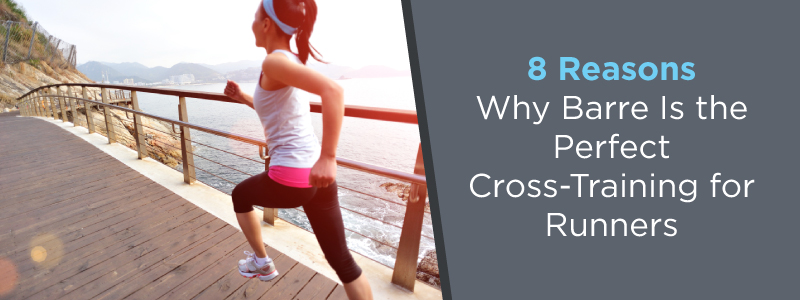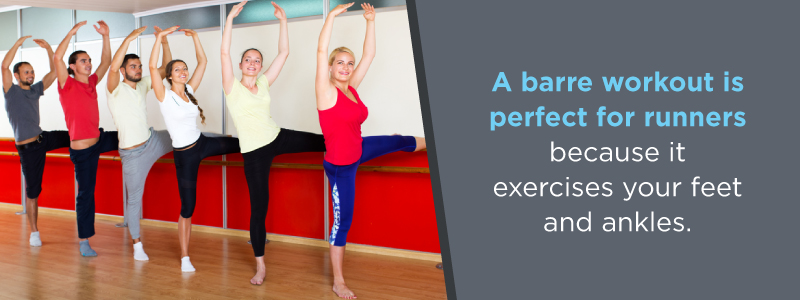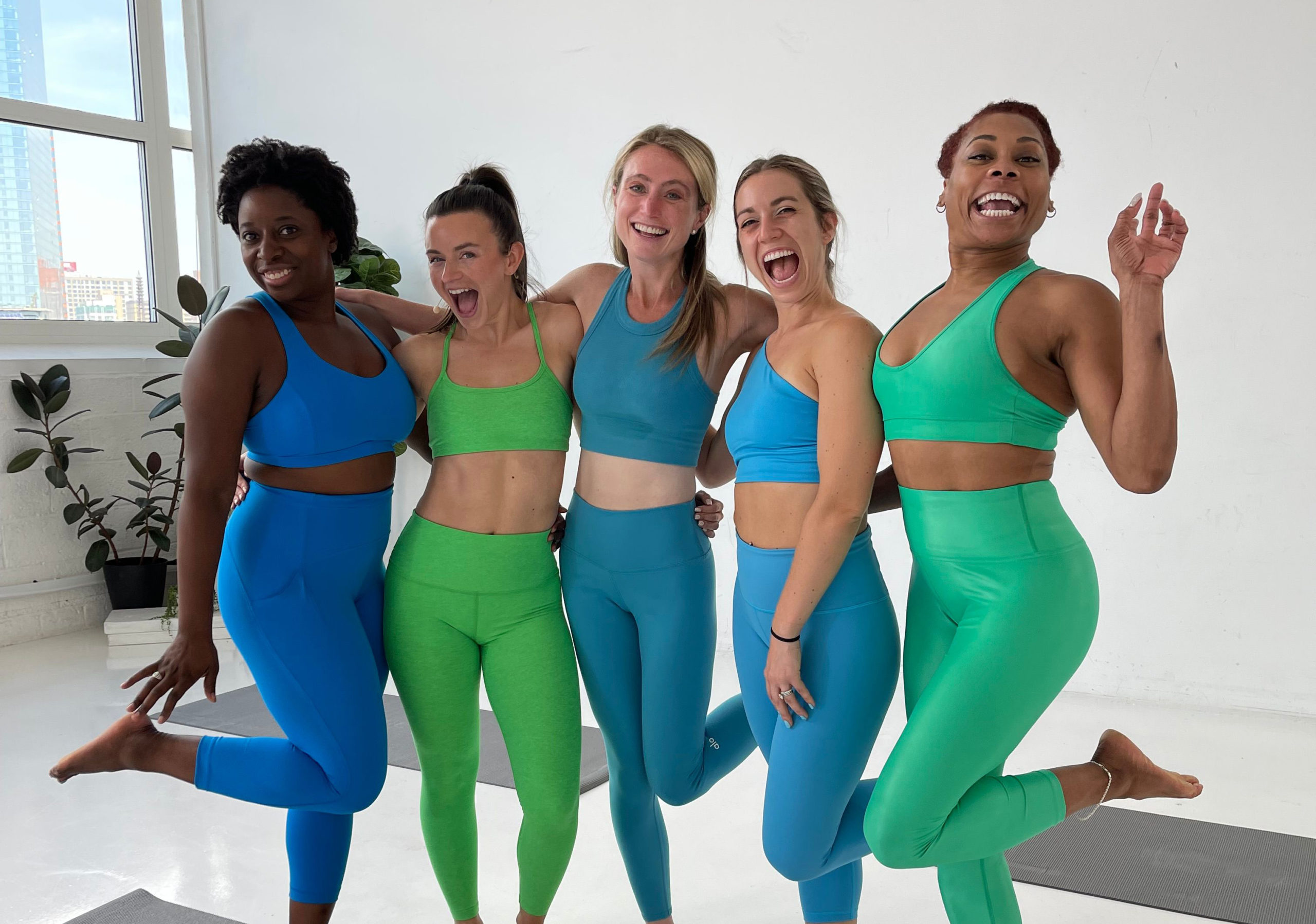Runners understand the urge to break free from the everyday grind and take off. During and after a good run, endorphins surge, mood improves and life is sunny. Runners not only experience a boost in happiness from running, but they also do their physical health and well-being a favor.
Although running has many great benefits — like torching calories and building self-esteem — it also has risks. Running is a high-impact activity which puts a lot of wear and tear on joints and muscles, increasing the chance of injury. For this reason, runners make a smart move when they incorporate cross-training into their routine.

Cross-training is when you train in more than one sport to improve performance in your main sport. If you love to run, it’s a great idea to include variety in your workouts so that you exercise parts of your body you normally don’t use. You’ll gain strength, improve endurance and run faster.

Although you may not want to devote time to anything other than running, trust us — it’s worth it. Once you see and feel the results, you’ll agree.
Why Choose Barre as Cross-Training With Running?
There are tons of ways to cross-train, so how do you know which to choose?
First, because running is high-impact, it’s best to complement running with a low-impact workout. It’s important not to overtrain or push yourself to the point of injury. Barre is a low-impact workout that is the perfect cross-training for runners because of this complementary isometric focus.
Isometric exercises focus on strengthening a specific muscle group while the rest of the body stays still. This puts a lot less stress on your joints while still strengthening important muscles. With isometric exercises, you immediately get the right muscles working without furthering pressuring your joints.
Barre, inspired by ballet and taking cues from pilates and yoga, combines strength-building exercises and stretching resulting in a lean physique, better posture, more flexibility and a stronger core.
A barre workout targets muscles that runners often neglect, like the ones close to your bones that support your body and help with stability. Barre involves smaller, specific muscle contractions for results you may not have thought possible. A barre workout is great for mental endurance too, as it builds a strong mind-body connection.
There are tons of reasons women and men love their barre workouts as an excellent cross-training option for runners. Still not convinced? Here are eight key reasons to head to a barre class and feel empowered with grace, like a ballerina warming up for the stage.
1. You’ll Get a Full-Body Workout
Whether you’re cross-training or looking for ways to complement your weight-loss plan, you can benefit from the full-body workout that barre provides. There’s no need to have experience, either. All fitness levels are welcome to improve their health, strength and physique through barre exercises.
Runners from all backgrounds might forget how important their other muscles are when they run. For example, runners use their arm muscles to dash past the finish line. A barre workout exercises all the muscles in your body, from head to toe.
During a barre workout, you’ll focus on exercising easy-to-forget small muscles as well as large muscle groups. Small muscles help protect your hips and knees from injury during or after a run, and should be considered in cross-training. With a barre workout, you’ll also strengthen your core muscles. A strong core is essential in helping you keep balance while running and powering your run.
Depending on the studio you go to, you may or may not incorporate free weights into the routine. Though barre is more about using your own body weight as resistance and building endurance through reps and is less about lifting heavy weights, it’s another way to max out a full-body impact. Combining barre and running means you can usually expedite weight loss.
2. It’s Low-Impact
As a runner, it’s important to give your joints a much-needed rest from time to time and focus on core-strengthening and muscle-toning with low-impact moves instead. Because barre focuses on small muscle movements while keeping the rest of the body still, it’s a nice change from pounding against the pavement. Plus, the more variety you incorporate into your workout routine, the better for your overall health.
Running is one of the most high-impact sports there is, which means it puts a lot of wear on your joints, such as your knee and hip joints. If you don’t give your body a rest, your chances of injury are much higher.
Barre helps you build strength, endurance and blast calories without the extra wear and tear. But don’t let the word “low” fool you! Just because barre is low-impact doesn’t mean it’s easy. You’ll still feel the burn, break a sweat and benefit greatly from the challenges of a barre workout.
3. You’ll Build Foot Strength
Runners often overlook the importance of strong feet. You might say that many of us take our feet for granted. However, a strong pair of feet is far more important for runners than they might realize because feet help keep you balanced, improve your stability and reduce your risk of injury.
Your feet and ankles get you where you’re going, and as such deserve love, care and attention. Weak feet and ankles will cause you to put stress on other areas of your body, which could lead to back pain and muscle tightness.

A barre workout is perfect for runners because it exercises your feet and ankles. Other workouts may not pay much attention to this important part of the body. During a barre workout, you’ll need to maintain balance with different barre exercises and stretches. You’ll quickly find yourself using those often overlooked yet vitally important foot and ankle muscles.
4. A Barre Workout Loves Stretching
You’ll go through a lot of stretching in a barre class, which is imperative for flexibility. Runners need their hamstrings and hip joints to be rested after an intense run. Stretching improves flexibility, which in turn has a ton of benefits like:
- Reduces stress in the muscles you use.
- Helps release the tension you build during a workout.
- Helps reduce the risk of injury because muscles will bend more easily.
- Improves overall performance.
Muscles do not permanently strengthen or lengthen, so flexibility is something that requires maintenance. As a runner, it’s important to stretch and strengthen your running muscles like quadriceps and hamstrings on days you do not run. Stretching right before running could lead to an injury, especially if you didn’t warm up your muscles first. A barre workout on your off days is the perfect opportunity to improve your flexibility.
What’s more, stretching helps relieve tightness in muscles, which as a runner you likely know too well. When you run long distance, you build muscles, resulting in muscle tightness. Stretching exercises prepare you for your next run to help you feel great.
5. You’ll Improve Your Balance
Good balance is extremely important for runners. Runners may not think of it this way, but when you run you never have two feet on the ground at the same time. Balance and stability are what prevent you from falling every time your foot hits the pavement.
Stability refers to your muscles’ ability to keep you upright after your foot lands. Balance is your body’s ability to adjust and re-align to stay upright. Balance develops from the power to predict and react to obstacles. Without good balance, you waste more energy than you realize as your body prevents you from falling. That energy you waste could have been used to run longer and faster instead.
Barre workouts improve balance because you are required to hold different positions while working your muscles. For example, it takes focus and the ability to maintain balance across 20 leg-lift reps. Barre involves muscle-toning exercises and repetitions that require equilibrium and a degree of mental relaxation. As a result, you’ll notice improved balance while you run.
Also, a barre workout strengthens your core muscles which help your body stay aligned and maintain balance. You’ll be a far more efficient runner with a strong core, as you won’t have to put so much energy into staying upright. Your muscles will work more evenly too, keeping you running longer and feeling more energized.
6. You’ll do Plenty of Hip-Opening Exercises
Hips help us keep balance. If there is something wrong with your hips, you’ll need to put a lot more effort into standing up straight. As a runner, malfunctioning hips will slow you down and make you tired quicker. Plus, sore hips will cause you to put extra strain on other parts of your body.
Running makes hip flexor muscles tight. Hip flexor muscles are attached to the hip joint and are responsible for pulling knees up and down when you walk or run, moving the legs from side to side, keeping the pelvis stable and allowing you to bend at the waist. Tight hips make it harder to run and can lead to overuse-related injuries like knee pain or iliotibial (IT) band syndrome.

Hip-opening exercises are a big part of a barre routine and will help loosen tight hip muscles, prevent injury and improve posture. Exercises like squats, lunges and stretches open the hips.
7. It’s Great for Injury Prevention
Barre workouts improve muscle strength, flexibility and balance which all greatly reduce injury risk. Runners are particularly at risk for injury because of the high-impact nature of their exercise routines. In fact, around 65 percent of all runners will be injured at ay time according to the University of South Florida. For every 100 hours of running, the average runner will suffer one injury.
Many running-related injuries are caused by improper training. Common injuries include:
- Runner’s knee or anterior knee pain
- IT band syndrome
- Shin splints
- Achilles tendonitis
- Plantar fasciitis
As a runner, you use the same joints and muscles repetitively. This can lead to tight muscles and muscle weakness, which might result in injury. A barre workout strengthens muscles all over the body so stress is more evenly distributed and well-worked muscles aren’t left to overcompensate for weaker ones. Also, inflexibility is a common cause of injury for runners. As we mentioned above, barre incorporates lots of stretching, which helps negate this.
It’s also a good idea to take a break from a high-impact sport like running to prevent injury. Barre helps your body recover while still providing the workout you need and crave.
8. You’ll Gain Mental Strength
Although barre is low-impact, it requires mental endurance, as during a barre class you’ll certainly feel your muscles burn. During a barre workout, you’ll learn to work through the discomfort, and you’ll be encouraged by your instructor and other class members to keep going. Barre trains you to be strong — just what you need to race past the finish line.
During a barre workout, you need to be fully present. It isn’t easy doing barre reps with a wandering mind. You’ll feel the sting of strength-building, and it will make you uncomfortable, but that’s how you know you’ll see the results you want. Barre exercises will empower you to overcome challenges as a runner and as a person. Ultimately, you’ll become more comfortable feeling uncomfortable because you’ll have developed a stronger mind-body connection and transcended the need for constant comfort.
How to Incorporate Barre Workouts Into Your Running Routine
A barre workout is mainly about toning your muscles and is a great complement to the high-impact cardio of running. You know what’s best for you, but to get real cross-training results started, try adding a barre class on your days off. For example, if you take three barre classes a week, try running one or two times a week on your days off from barre. It depends what works for you, but it’s always good to start out slow.

You might find that you prefer to fit your workouts in the same day, like running before or after barre class depending on how you feel or what your schedule allows. Running on days off from barre class might create the perfect balance, but if you decide to use a run as a warm-up for class, do so 20 to 30 minutes ahead of time, or give yourself a short break after barre before a run. Either way, make sure there’s plenty of time between exercises so you don’t overtrain.
Get Results at Physique 57
Barre is the perfect way to tone muscles for a lean physique and to complement your running routine. You’ll have better flexibility, more endurance and greater running performances as a result of barre classes. Plus, a barre workout relieves stress with low-impact reps that work. With barre, it does not take long to see the results you want, and it can easily fit into busy schedules and other workout routines.
Whether you’re a runner looking to cross-train and improve performance, or a beginner hoping to get toned and shed pounds, mixing barre class and running routines can bring you great results.
At Physique 57, we believe in the power of self-love and self-investment. You are worth the time and energy it takes to treat your body well, and every body has the potential to be strong, beautiful and extraordinary. Perfection is a myth — but treating yourself well isn’t. You’re worth the effort it takes to become your best.
Are you ready to build your best body ever? Visit a Physique 57 studio today or stream one of our on-demand workout videos you can do anytime, anywhere.



